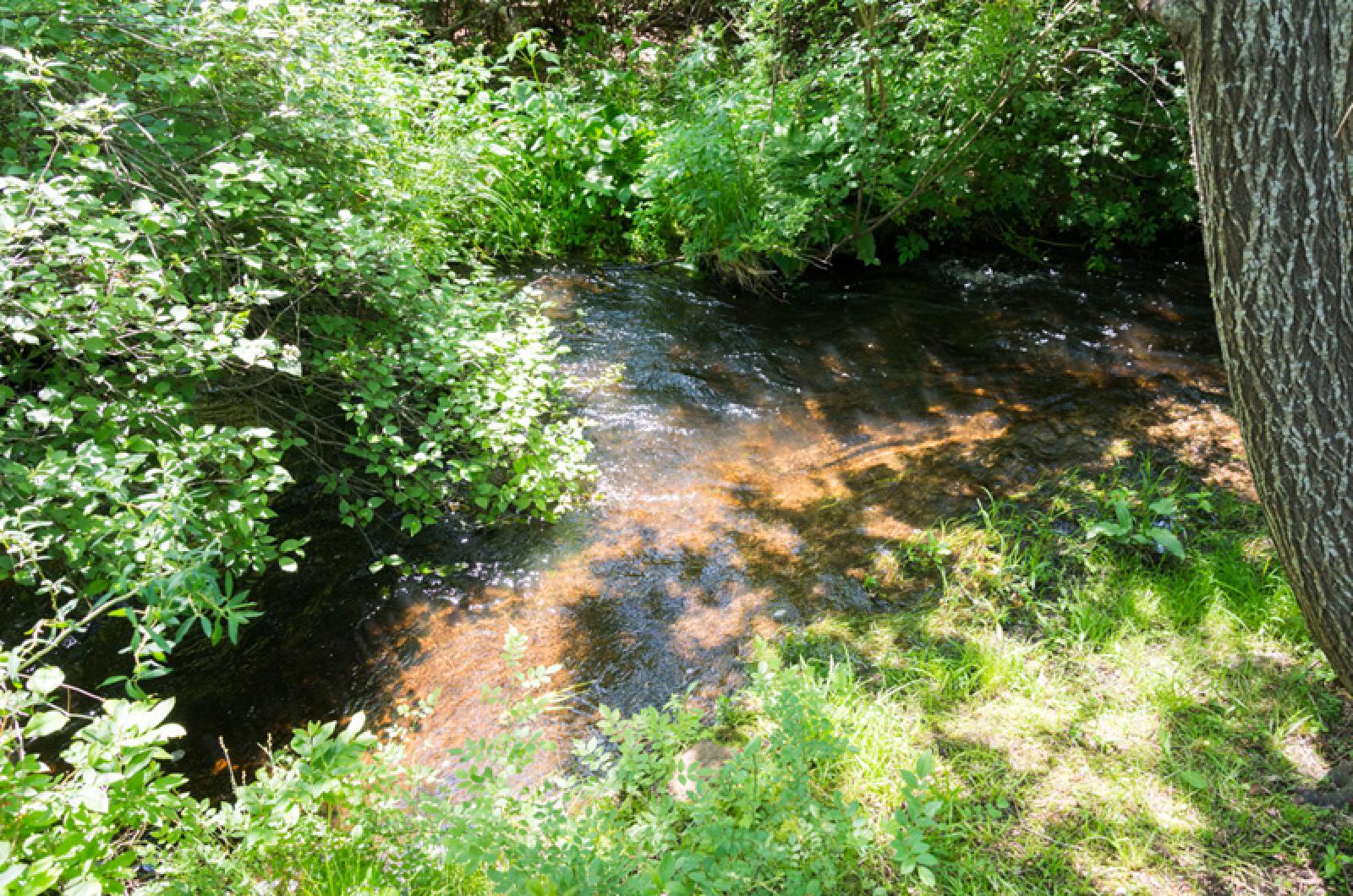A new report on Mill Brook highlights the effects of manmade ponds along the freshwater stream that has stirred debate and is now the subject of a major watershed study.
Greg Whitmore, an entomologist who formerly worked for The Trustees of Reservations on the Vineyard, identified 62 species of macroinvertebrates (small insects, mites and other organisms) collected from various sites along the brook, which begins in Chilmark and flows into the Tisbury Great Pond.
The report provides a baseline assessment of macroinvertebrate diversity and distribution, which indicate water quality. Several dams along the stream create impoundments that are known to increase water temperature and create muddy, slow-moving areas upstream.
As a result of increased riffle (rough water) habitat, species diversity increased below Fisher, Crocker, Priester’s and Albert’s ponds, the report finds. But the mix of species above and below each of those ponds differed significantly. “This shows that the ponds have a definitive influence on species composition at all four sites,” Mr. Whitmore writes.
The report builds on a 2015 watershed study by BiodiversityWorks in Vineyard Haven, which collected and counted macroinvertebrates at 11 sites between Waskosim’s Rock Reservation and Albert’s Pond, including two tributaries that feed into the stream. Mr. Whitmore reviewed the samples and found that areas above and below the dams may attract species that can tolerate higher temperatures and lower levels of dissolved oxygen.
“The dams/ponds increase temperature, decrease oxygen, decrease the overall riffle habitat and create impenetrable barriers for the migration movement of fish and the daily downstream drift of macroinvertebrates,” he writes.
“As there is no baseline documentation prior to dam installation, it is difficult to determine what a pristine fauna would be,” he adds. “In this [regard] the dams may have altered the species present by attracting species more adapted to living in slow or warmer-water environments. The higher temperatures and lower levels of dissolved oxygen created by the dams may have killed off more sensitive species in the past.”
Unlike many freshwater streams, the report finds, diversity also decreased farther downstream - perhaps another consequence of the impoundments.
The report adds to a large body of data and analysis going back at least to the 1970s, including a string of reports since 2006, some of them focused on the Mill Pond in West Tisbury, where residents have debated whether to dredge the pond to remove excess sediment and vegetation, or drain it altogether and allow that portion of the stream to revert to marshland. The current Mill Brook watershed study will likely incorporate the macroinvertebrate study, along with a large amount of other recent data.
Looking at all sites combined, Mr. Whitmore calculated a biotic index of 4.75 (on a scale of one to 10), which indicates “good” water quality, with some organic pollution likely present. The numbers were similar for upstream and downstream sites, although the species collected downstream were those that can tolerate lower levels of dissolved oxygen caused by high temperatures and organic pollutants such as fertilizer and sewage.
Samples were collected only in the summer, which likely skewed the results for species diversity, the report states, since many species are only present between late fall and early spring. Summer species tend to be more tolerant of low oxygen levels, the report notes, which means a longer sample period could collect more environmentally sensitive species and raise the biotic index.
Mill Brook is home to native brook trout, American brook lamprey and other cold water species, although the dams prevent the passage of herring and other anadromous fish that would likely swim upstream to spawn. A fish ladder was installed two years ago at the Mill Pond dam, although herring have yet to be observed moving through it. A study in 2015 recorded peak temperatures exceeding 85 degrees below Priester’s and Mill ponds, and at a small impoundment at the Roth Woodlands in Chilmark. (Brook trout cannot survive in water temperatures exceeding 70 degrees.)
Twenty-nine reports, maps and other documents related to Mill Brook, including the macroinvertebrate and BiodiversityWorks studies, are available on the West Tisbury town website, westtisbury-ma.gov.







Comments
Comment policy »